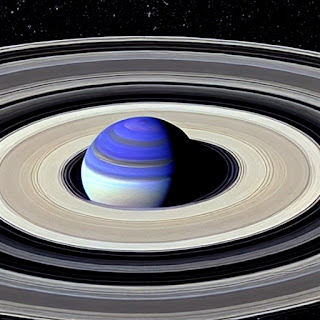Saturn's Mystical Hue and Its Cosmic Proximity
In the vast expanse of our celestial neighborhood, Saturn stands as one of the most captivating and enigmatic planets. Its mesmerizing coloration and intriguing distance from Earth have long piqued the curiosity of astronomers and space enthusiasts alike. In this blog, we will delve into the captivating colors of Saturn and explore its ever-changing proximity to our home planet.
**The Palette of Saturn:**
Saturn's striking colors are among its most distinctive features. When you look at Saturn through a telescope, you'll notice its predominant hue is a warm, golden-yellow. This breathtaking coloration is primarily due to the planet's upper atmosphere, which contains various gases and compounds, notably ammonia and methane. These substances interact with sunlight in a way that gives Saturn its distinctive golden glow.
However, Saturn's coloration isn't static. Its dynamic atmosphere is characterized by ever-shifting cloud patterns and bands of colors. These features, reminiscent of Jupiter's cloud belts, add depth and complexity to Saturn's appearance. Storms and atmospheric disturbances can also create temporary variations in the planet's coloration, providing astronomers with an ever-changing canvas to study.
**The Distance Dance:**
Now, let's turn our attention to Saturn's distance from Earth, a parameter that has significant implications for our ability to observe and study the planet. The distance between Earth and Saturn varies as both planets orbit the Sun in elliptical paths. On average, Saturn is about 1.4 billion kilometers (869 million miles) away from Earth. However, this distance is not constant; it fluctuates as both planets move along their respective orbits.
During its closest approach to Earth, Saturn can come as close as approximately 1.2 billion kilometers (746 million miles). This phenomenon, known as "opposition," occurs when Saturn is directly opposite the Sun in the sky, and it's the optimal time for observers on Earth to view the planet. At opposition, Saturn appears more prominent and brighter in the night sky, making it an ideal time for amateur astronomers and professionals alike to capture stunning images and conduct detailed observations.
Conversely, when Saturn is on the far side of its orbit from Earth, it can be as distant as around 1.7 billion kilometers (1.05 billion miles). At these times, Saturn is less accessible for observation and appears smaller and fainter in our night sky.
In conclusion, Saturn's golden hue and ever-changing proximity to Earth make it a captivating subject of study and admiration for astronomers and stargazers alike. Its unique coloration, influenced by its atmospheric composition, and the dance of distance between our two planets ensure that Saturn remains a celestial wonder that continues to inspire awe and wonder in all who cast their gaze upon it.



Comments
Post a Comment